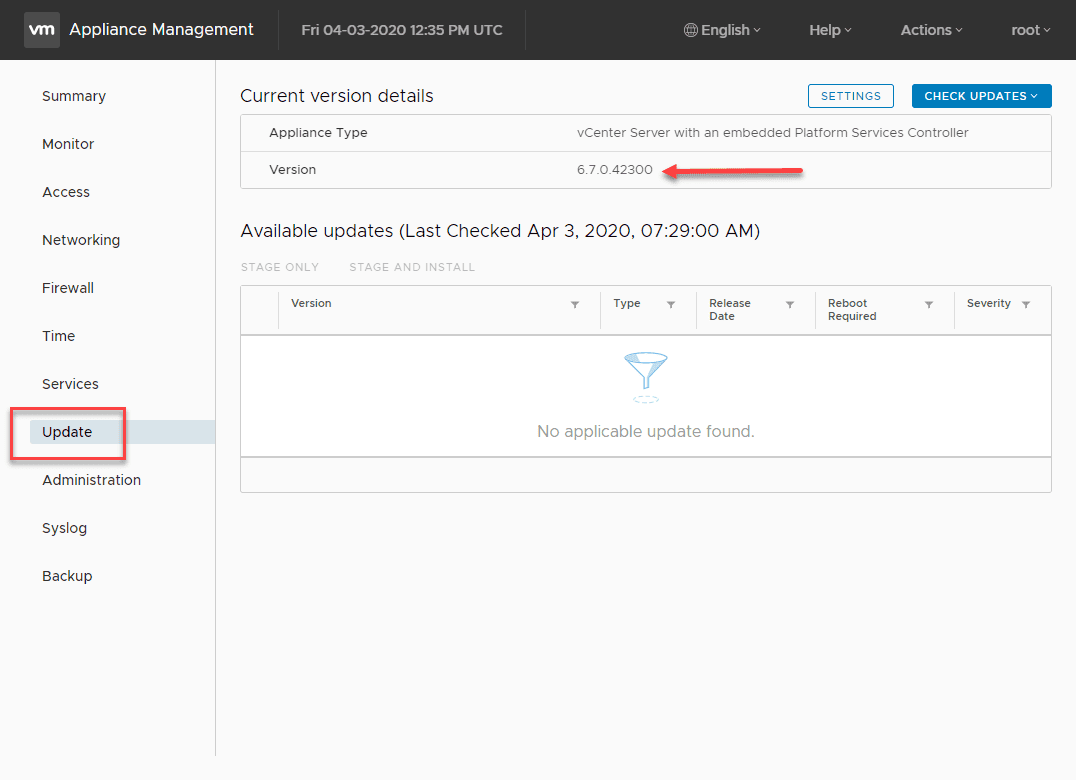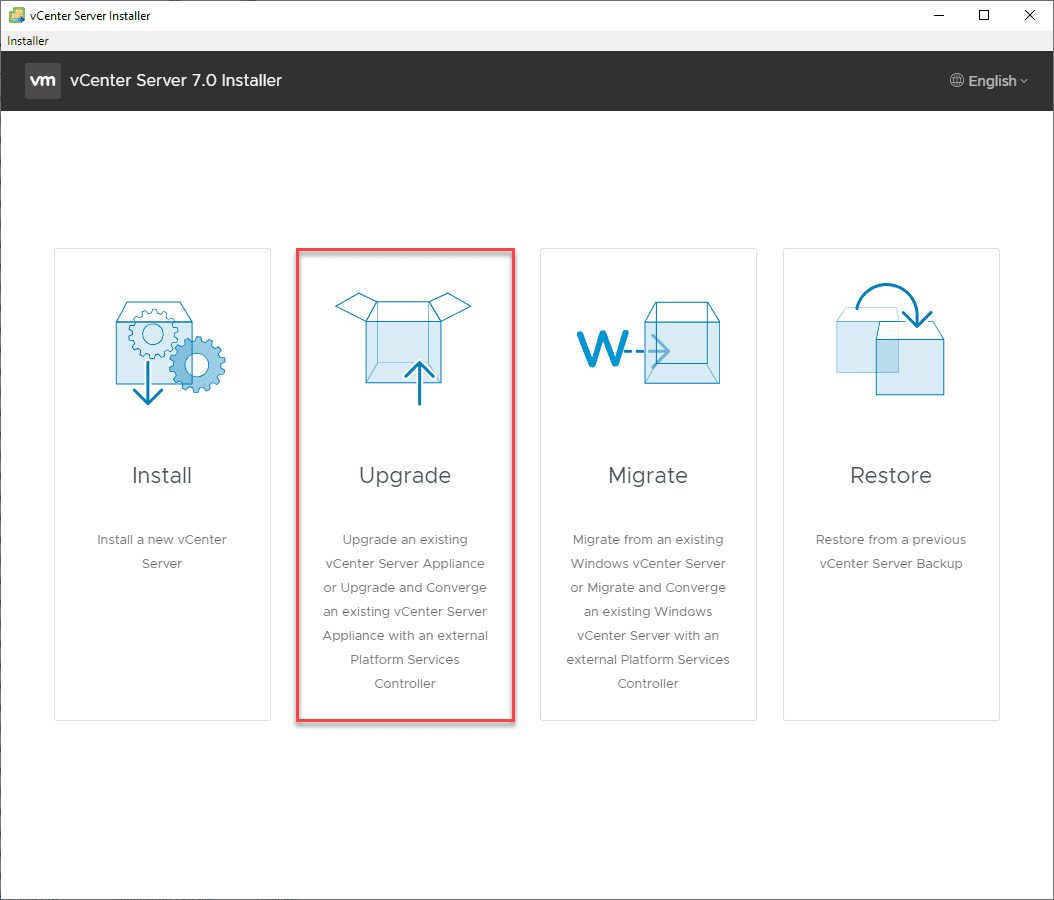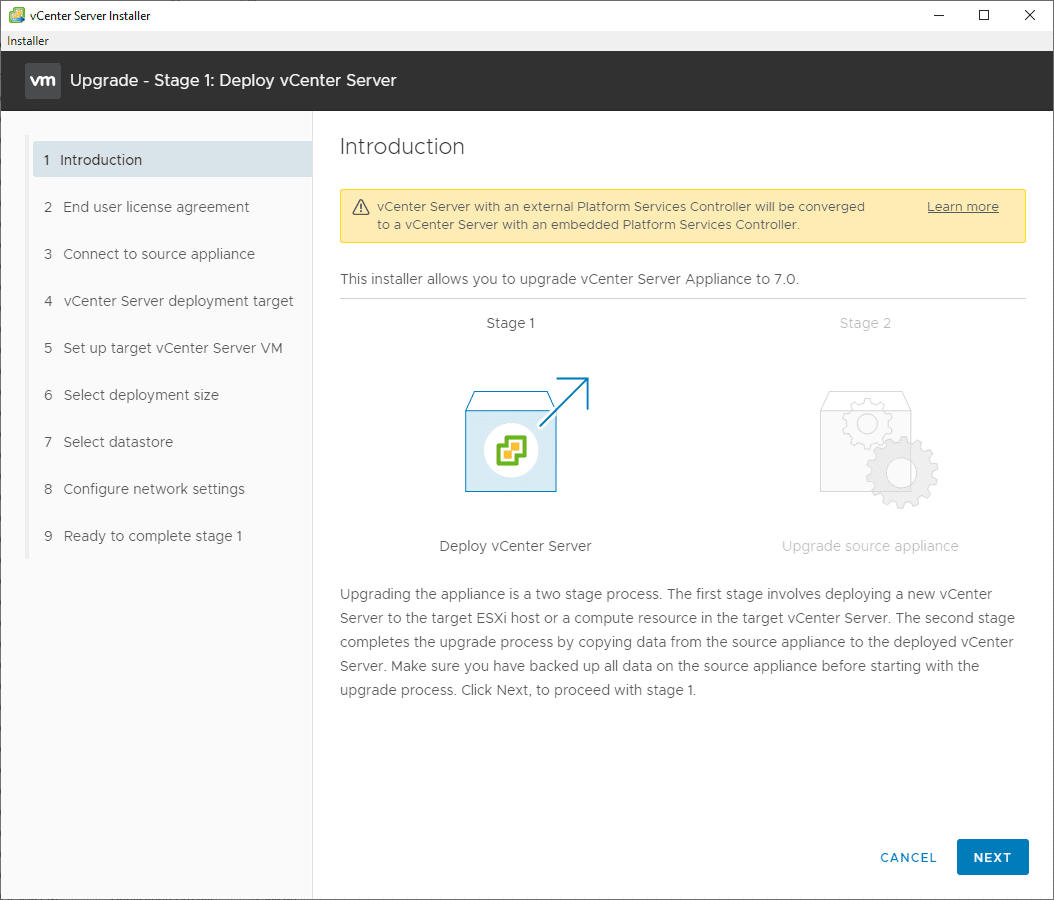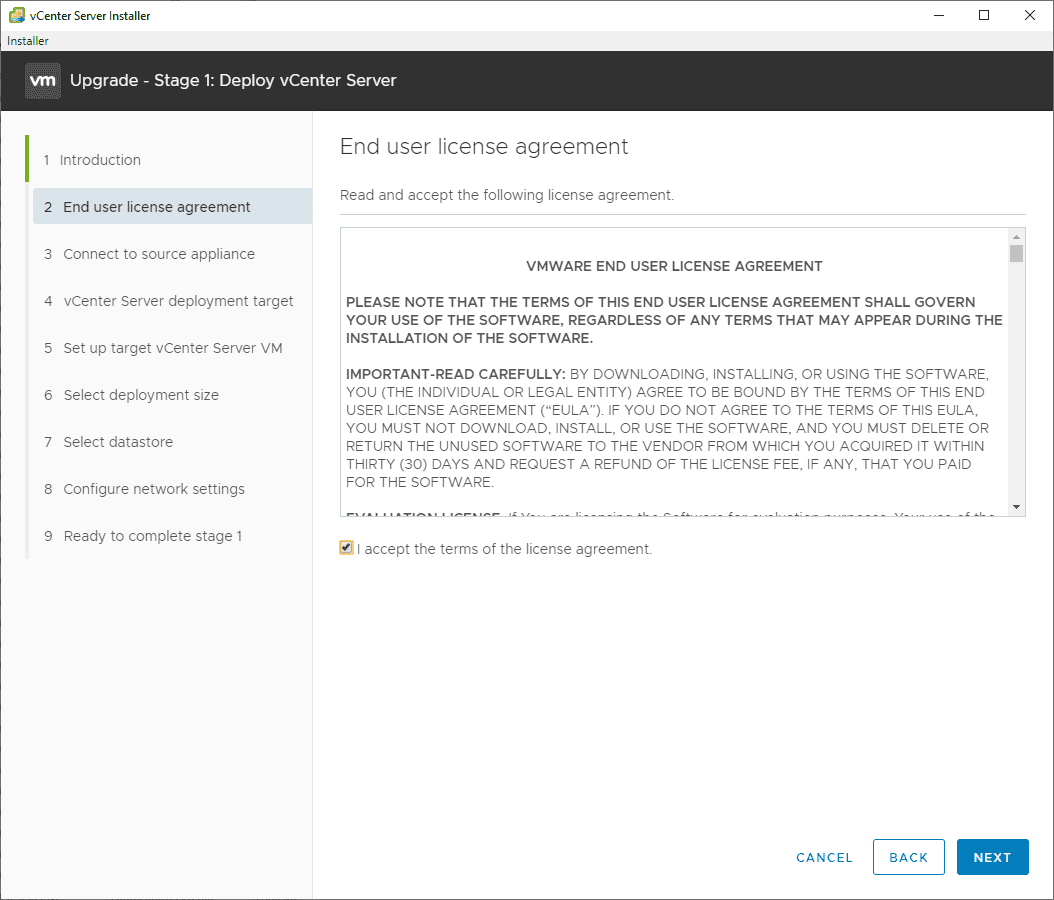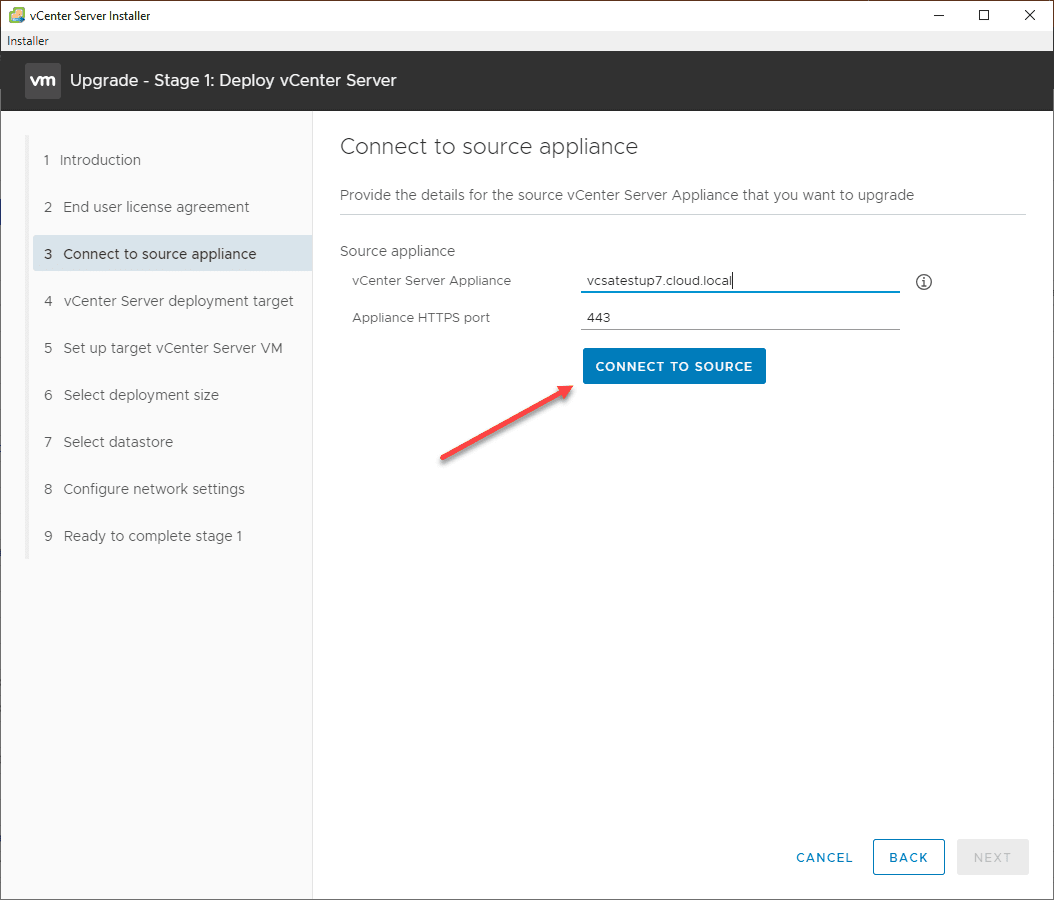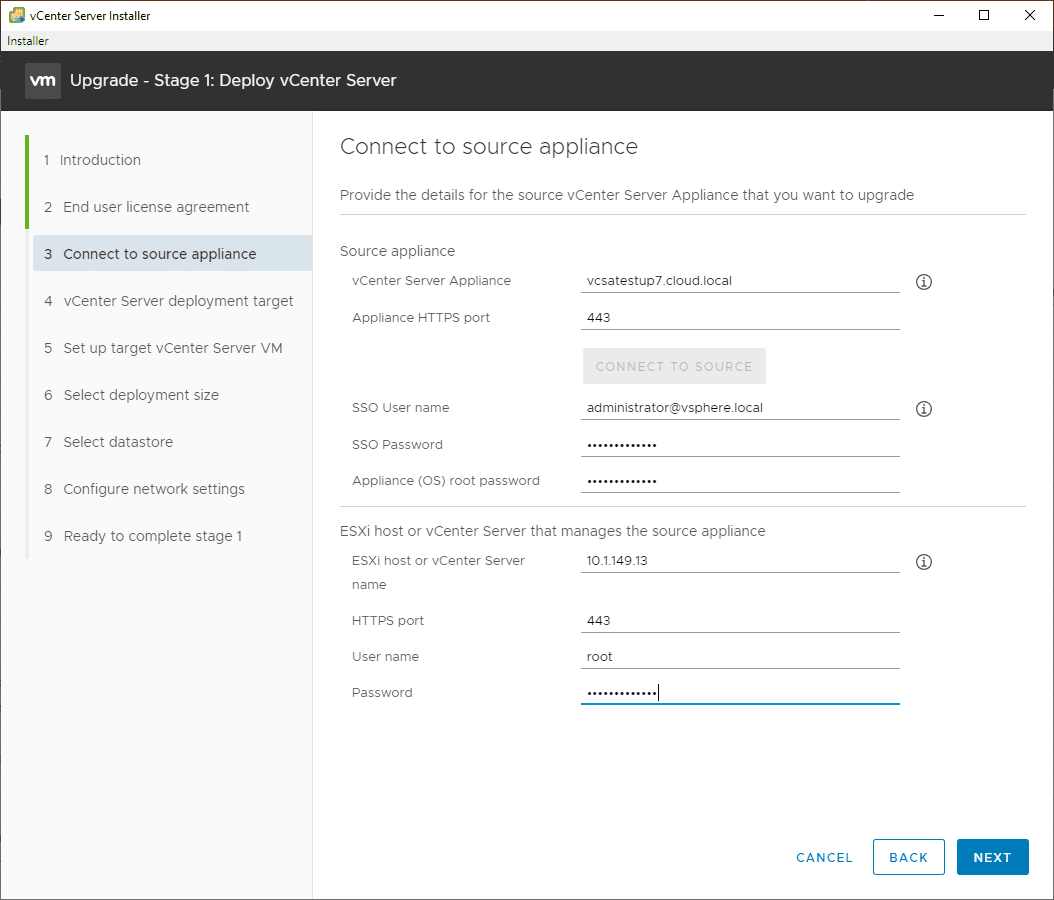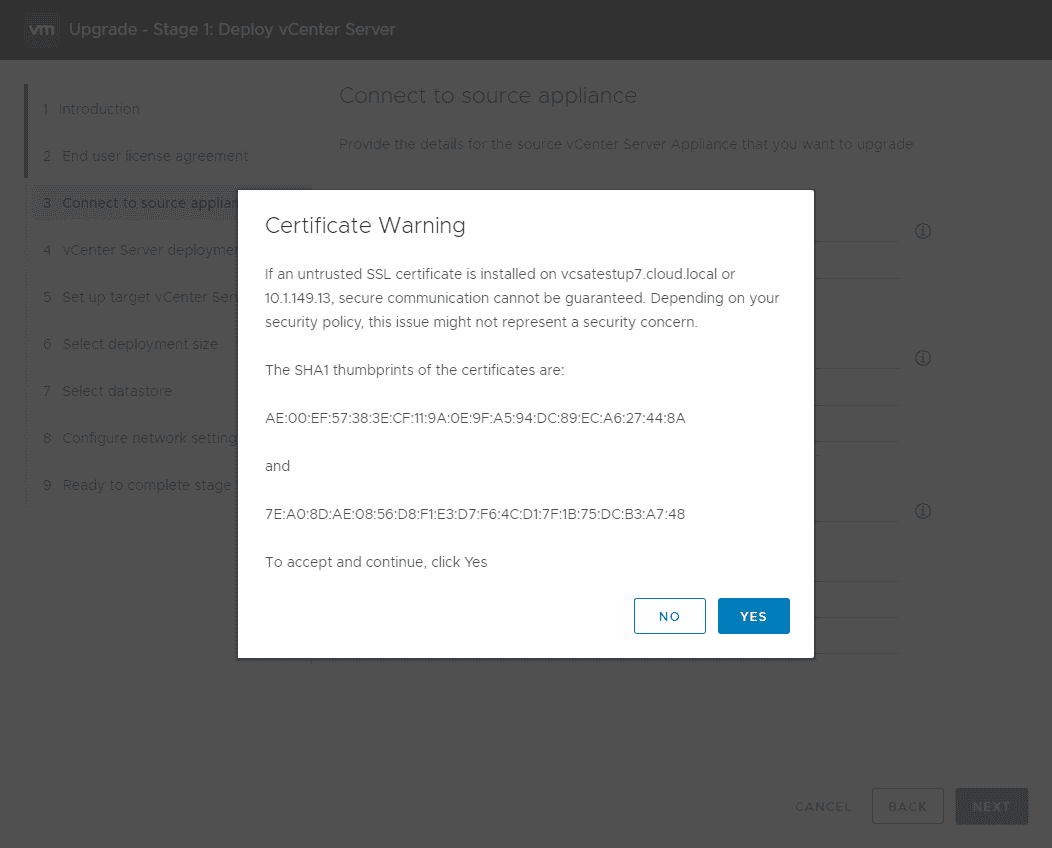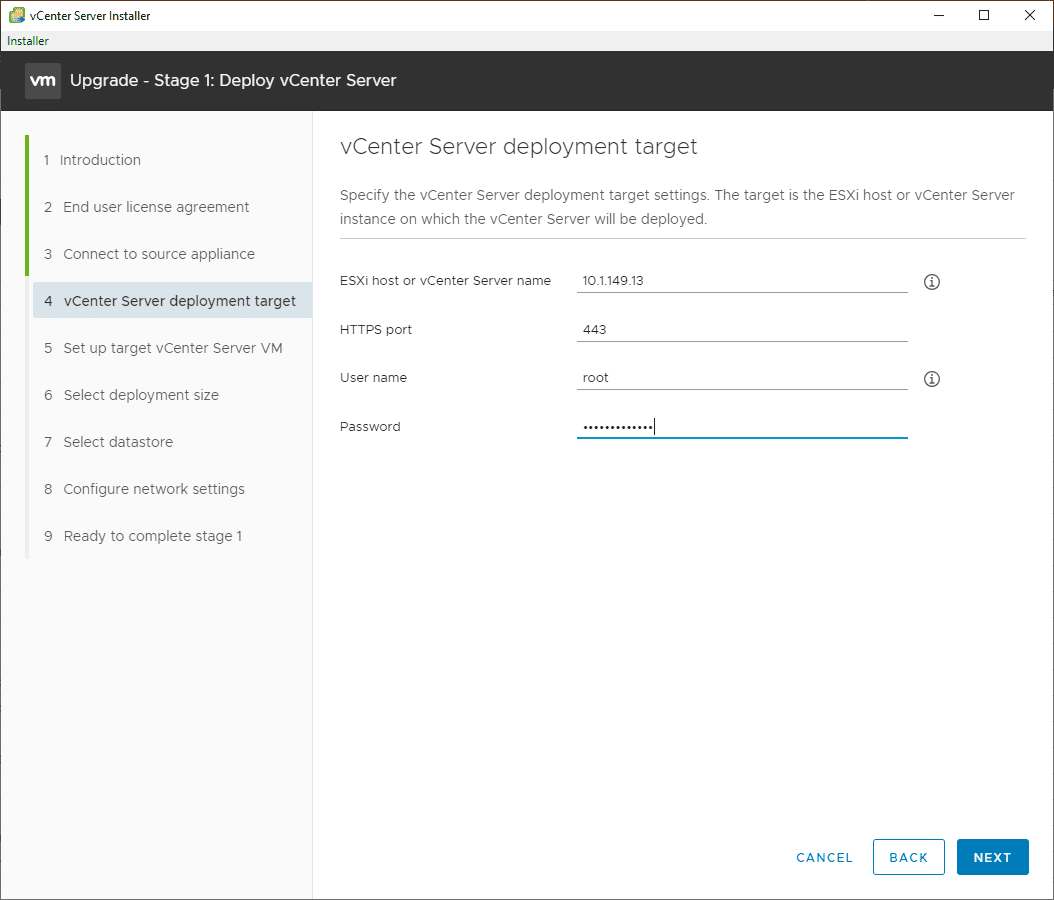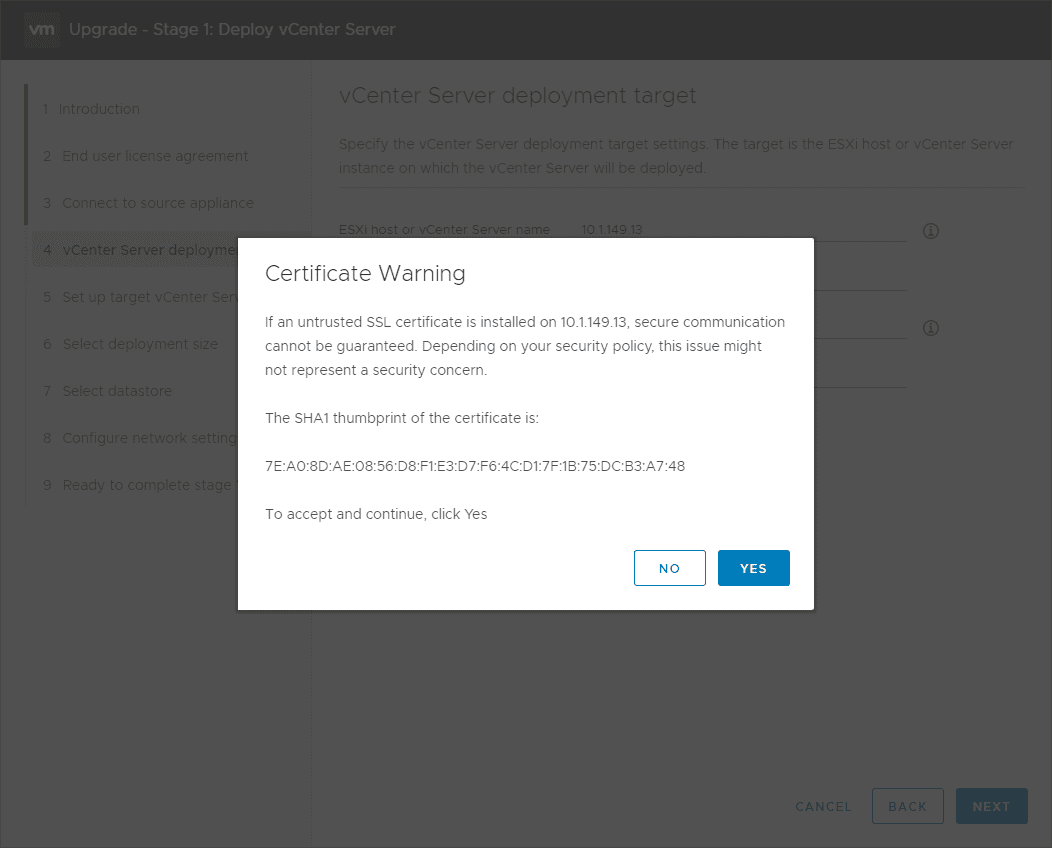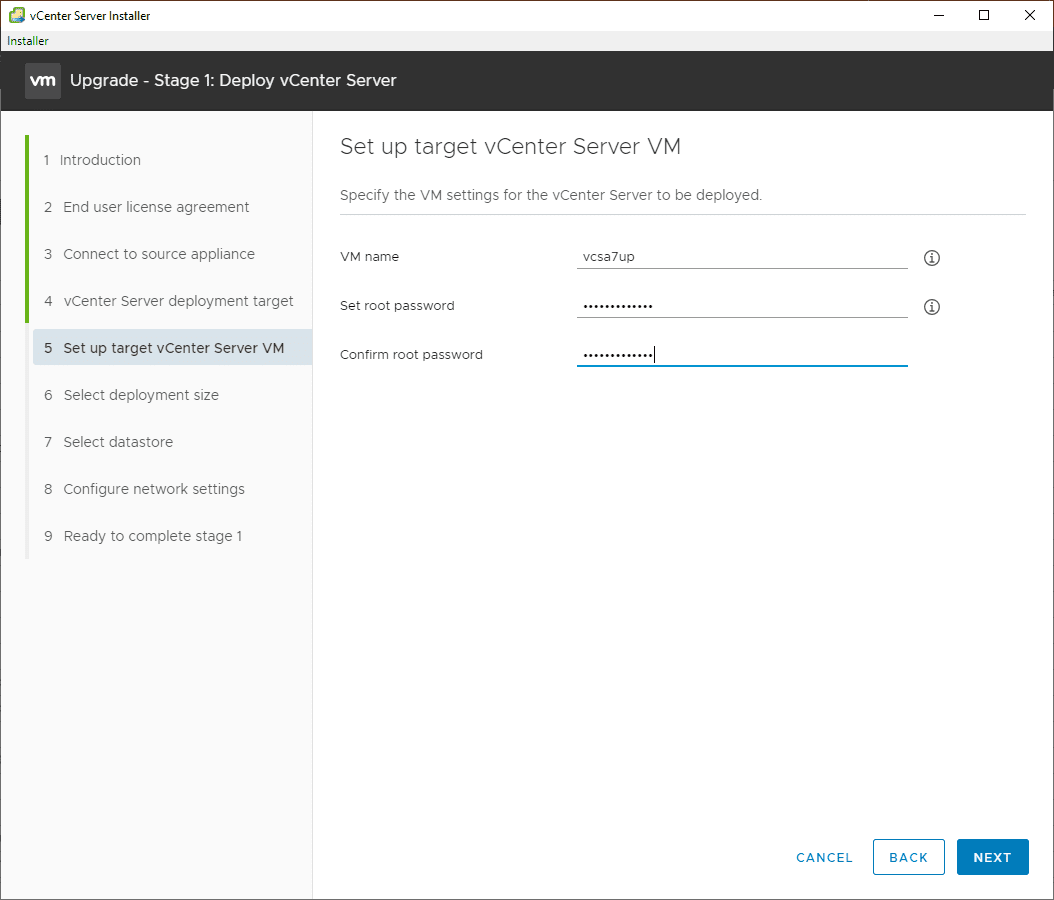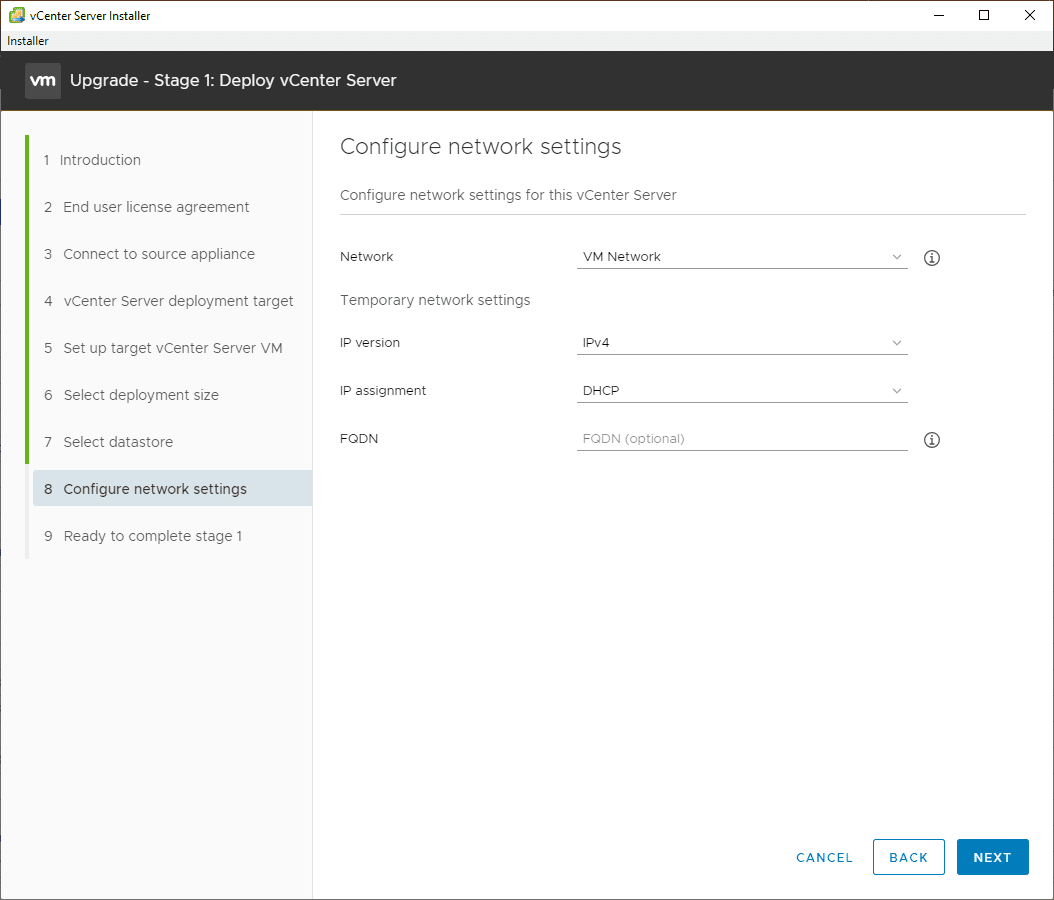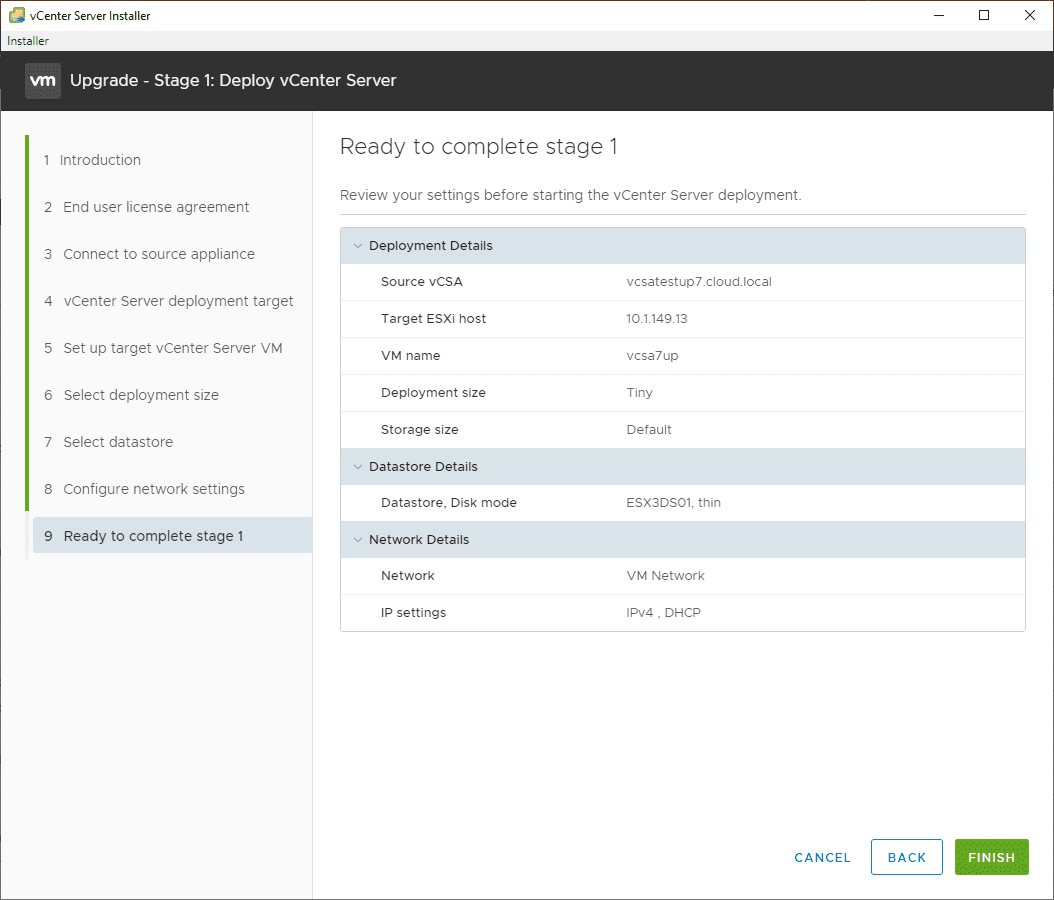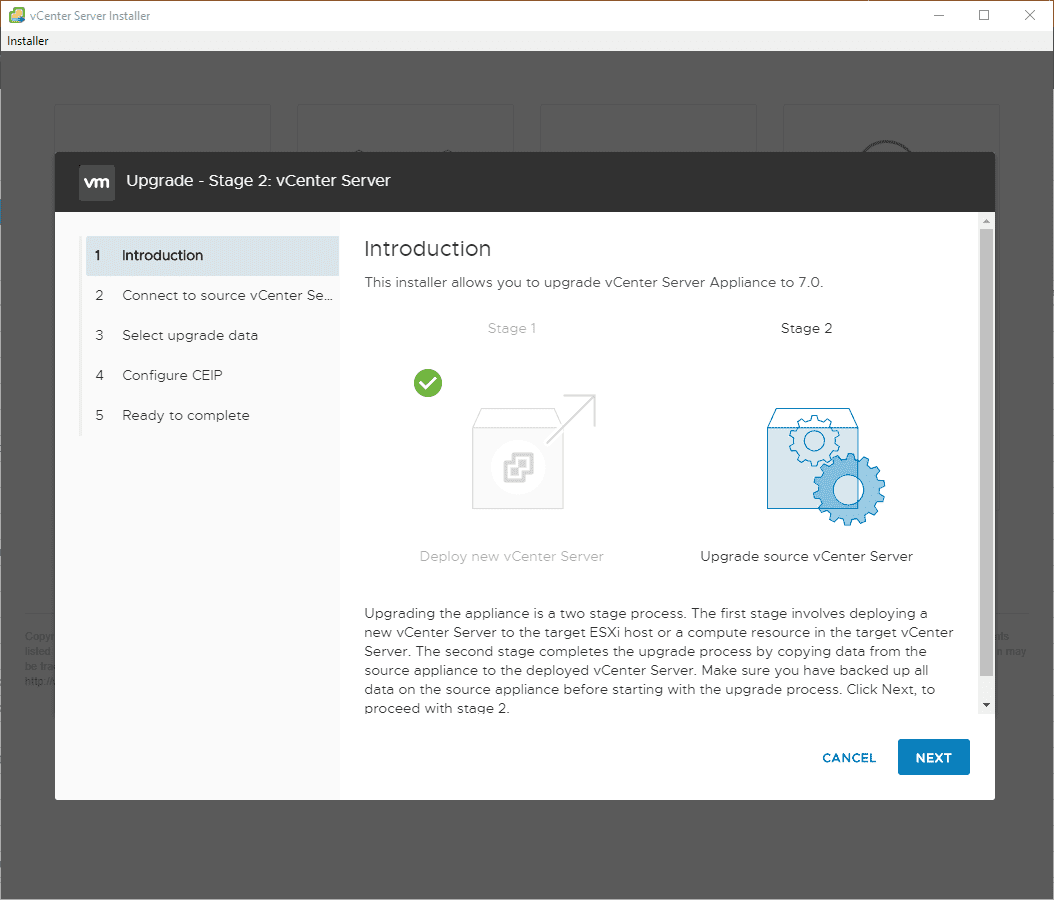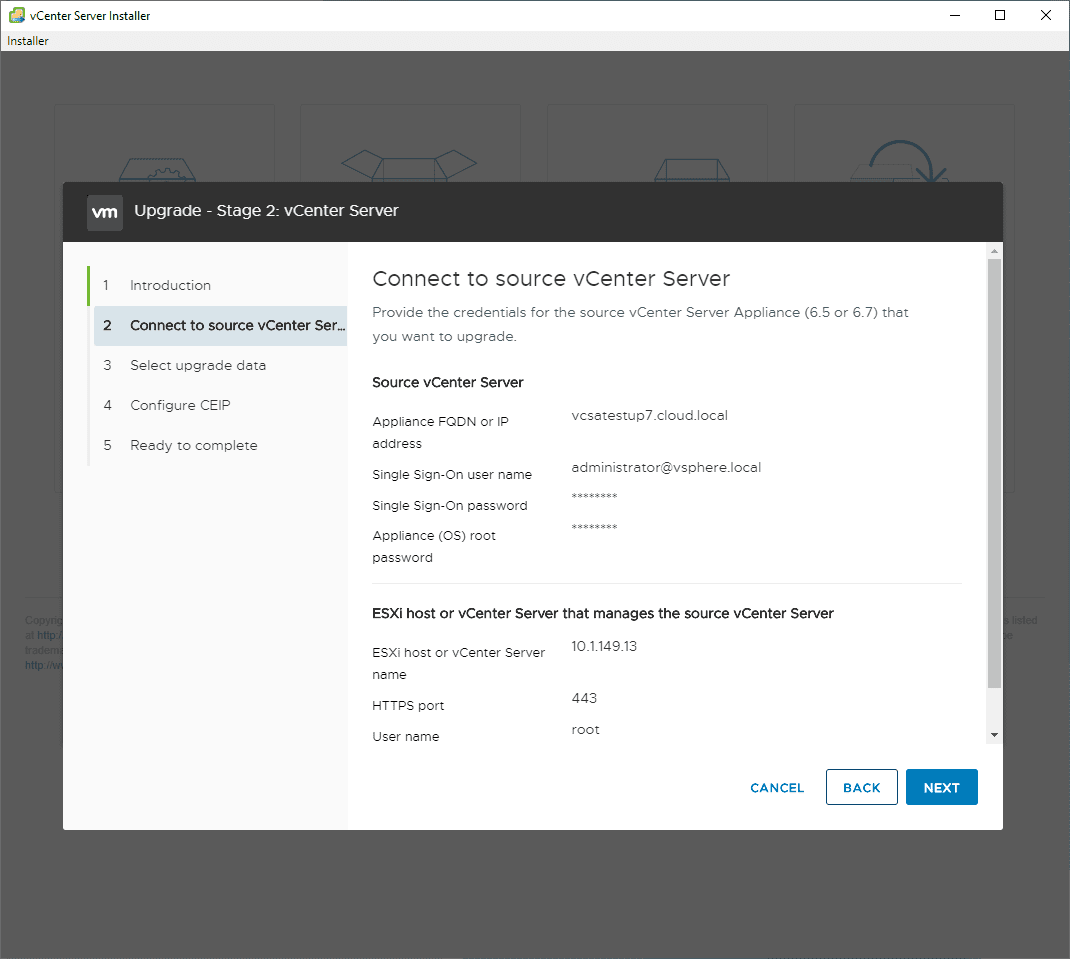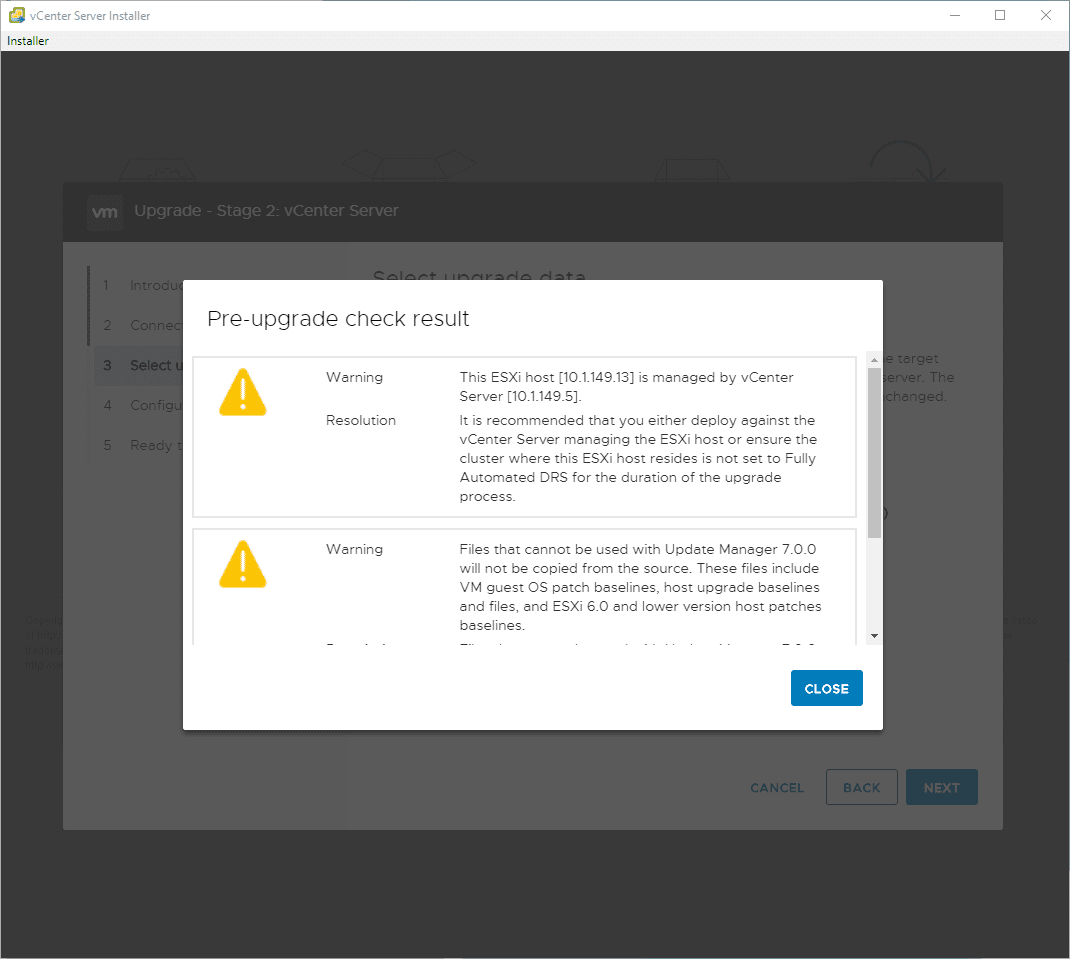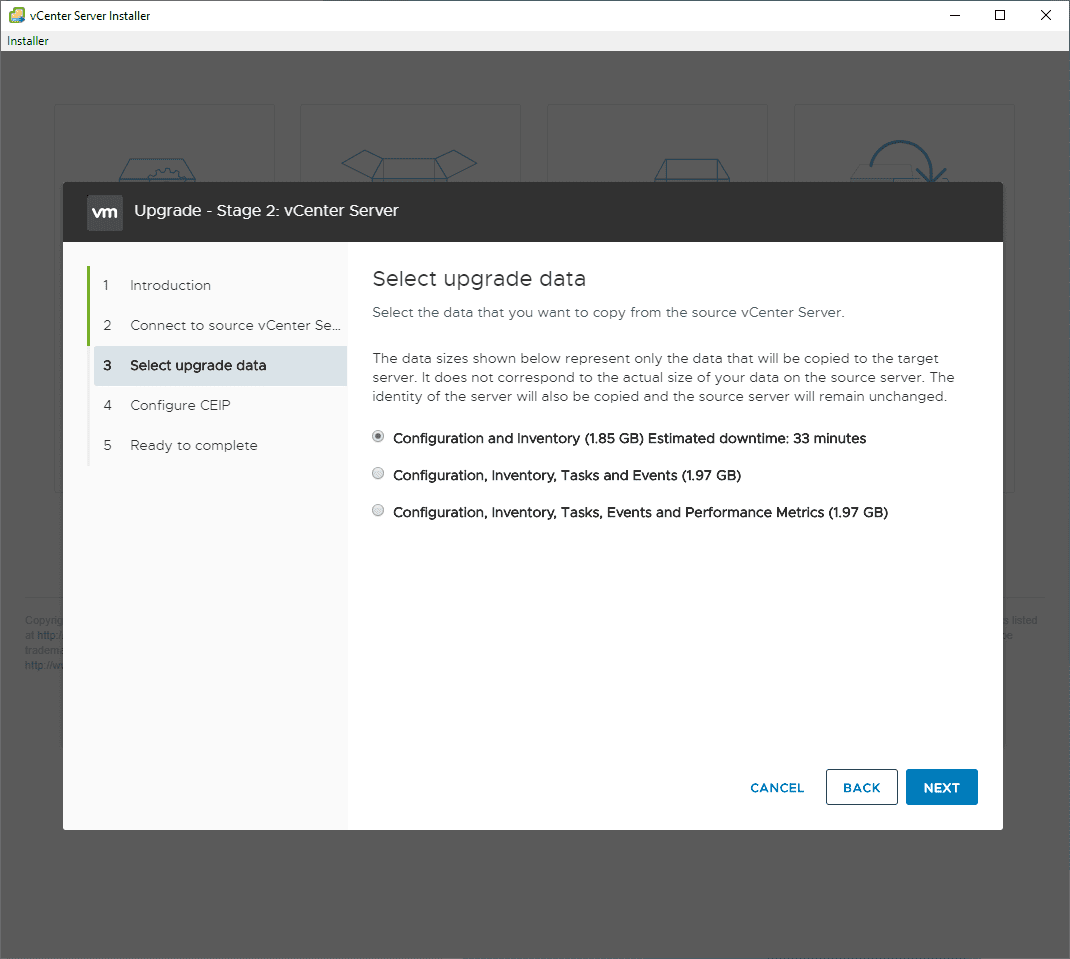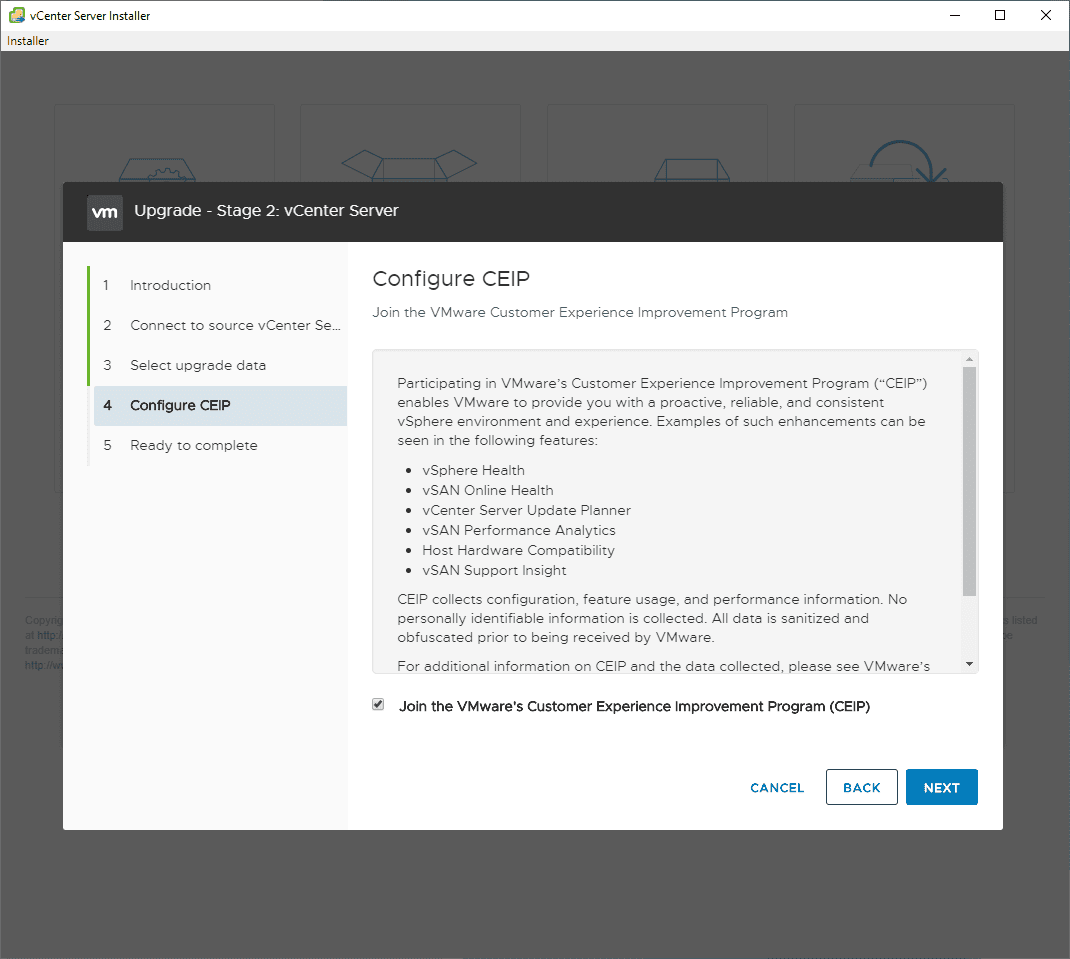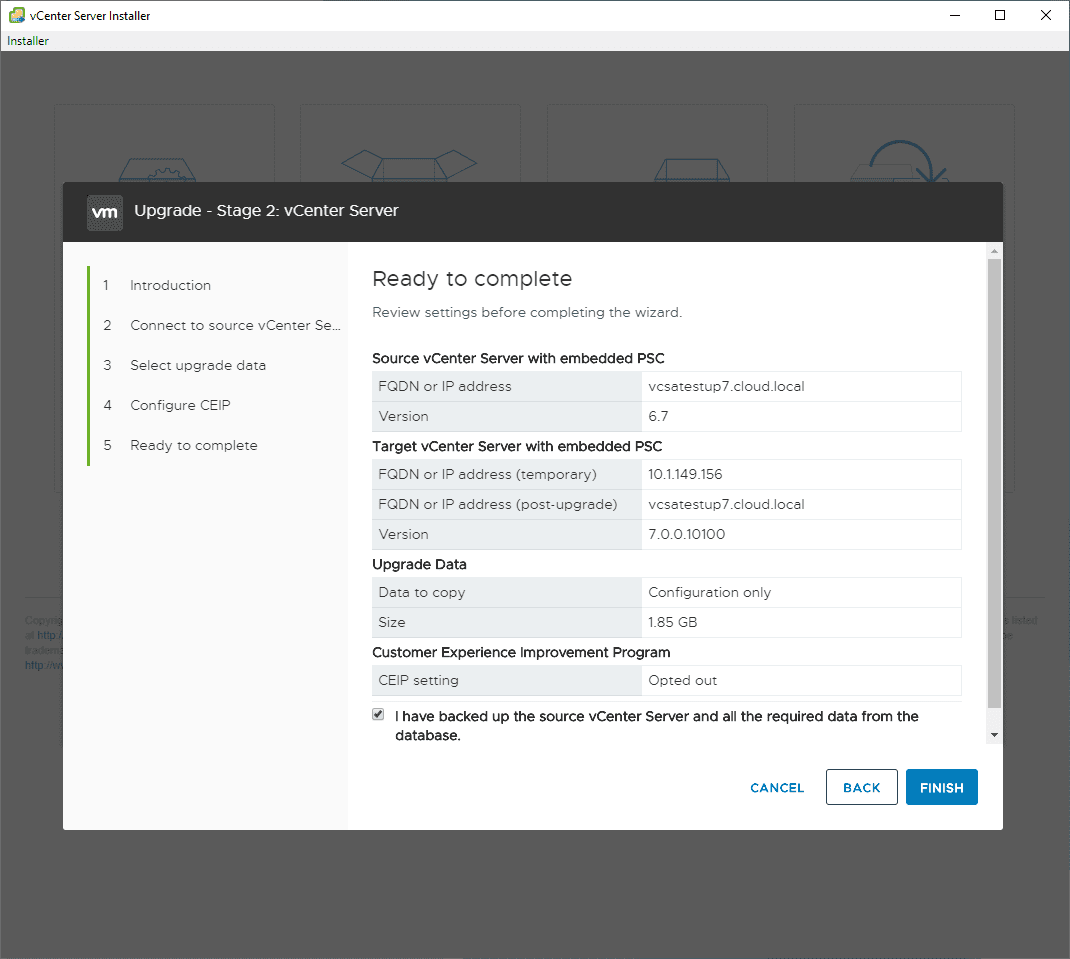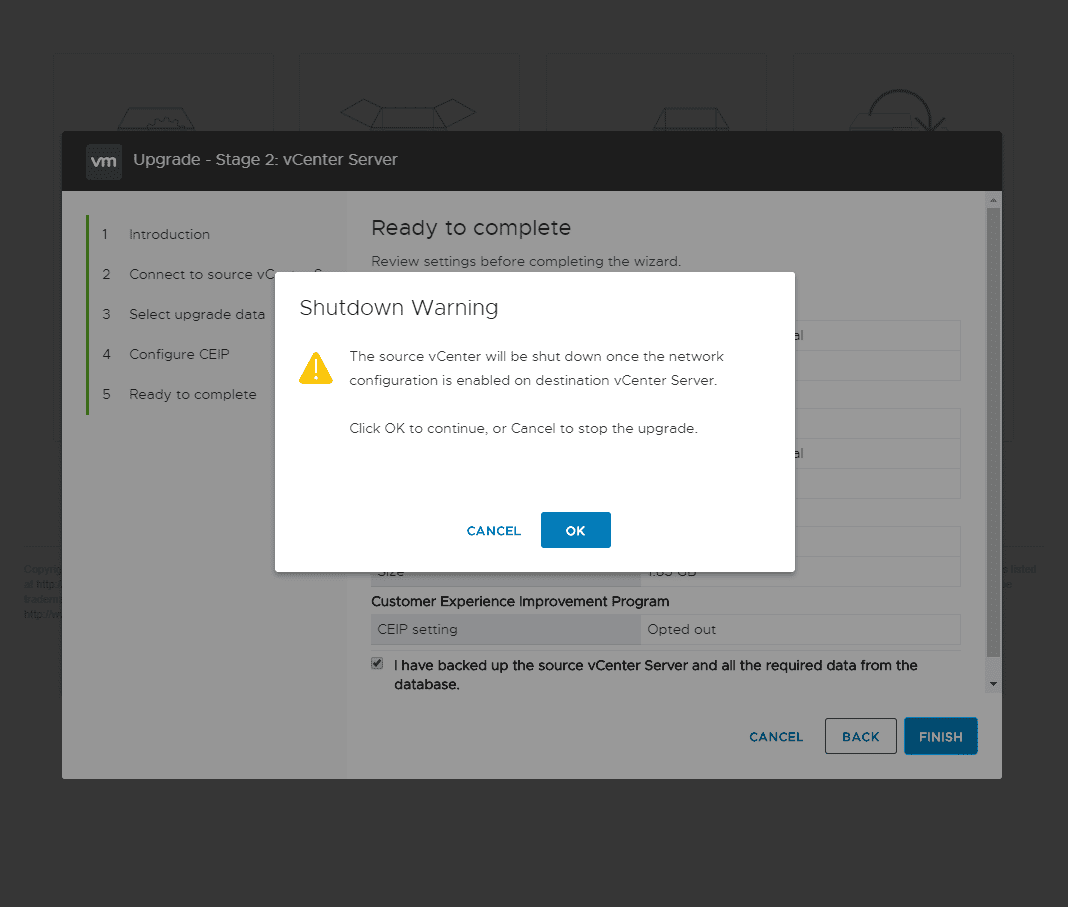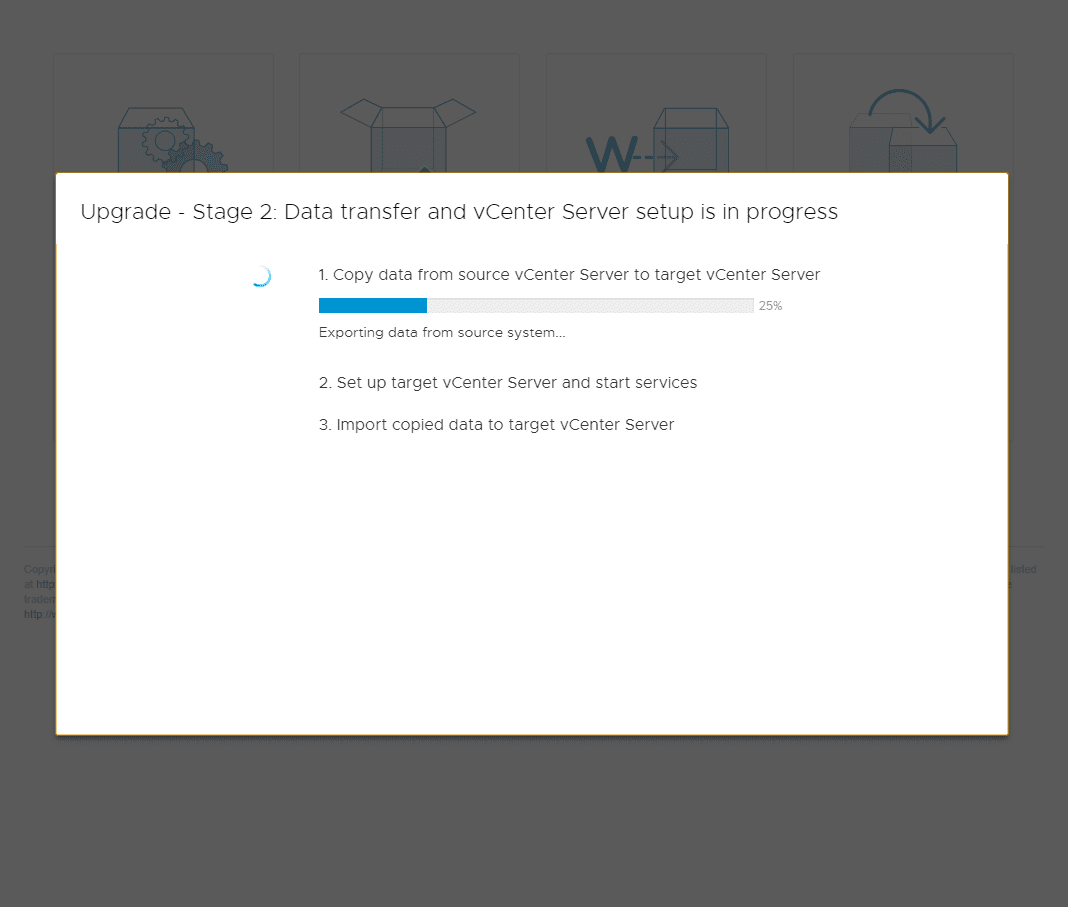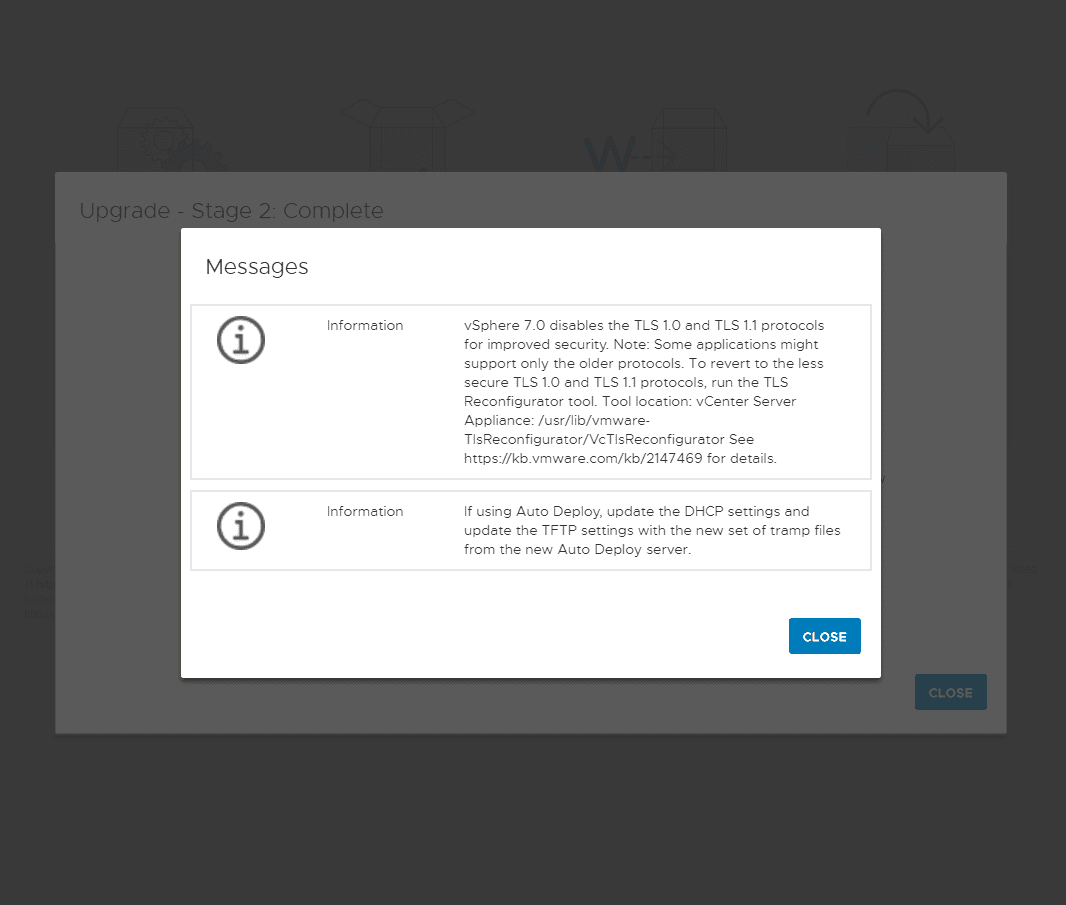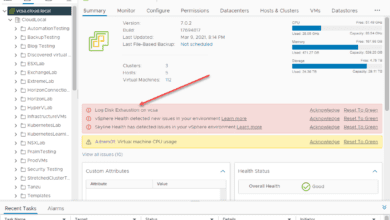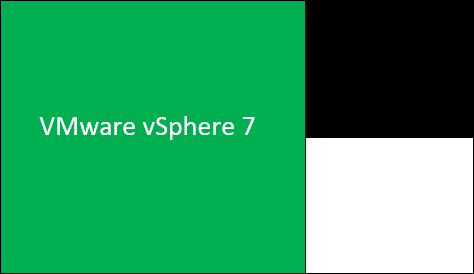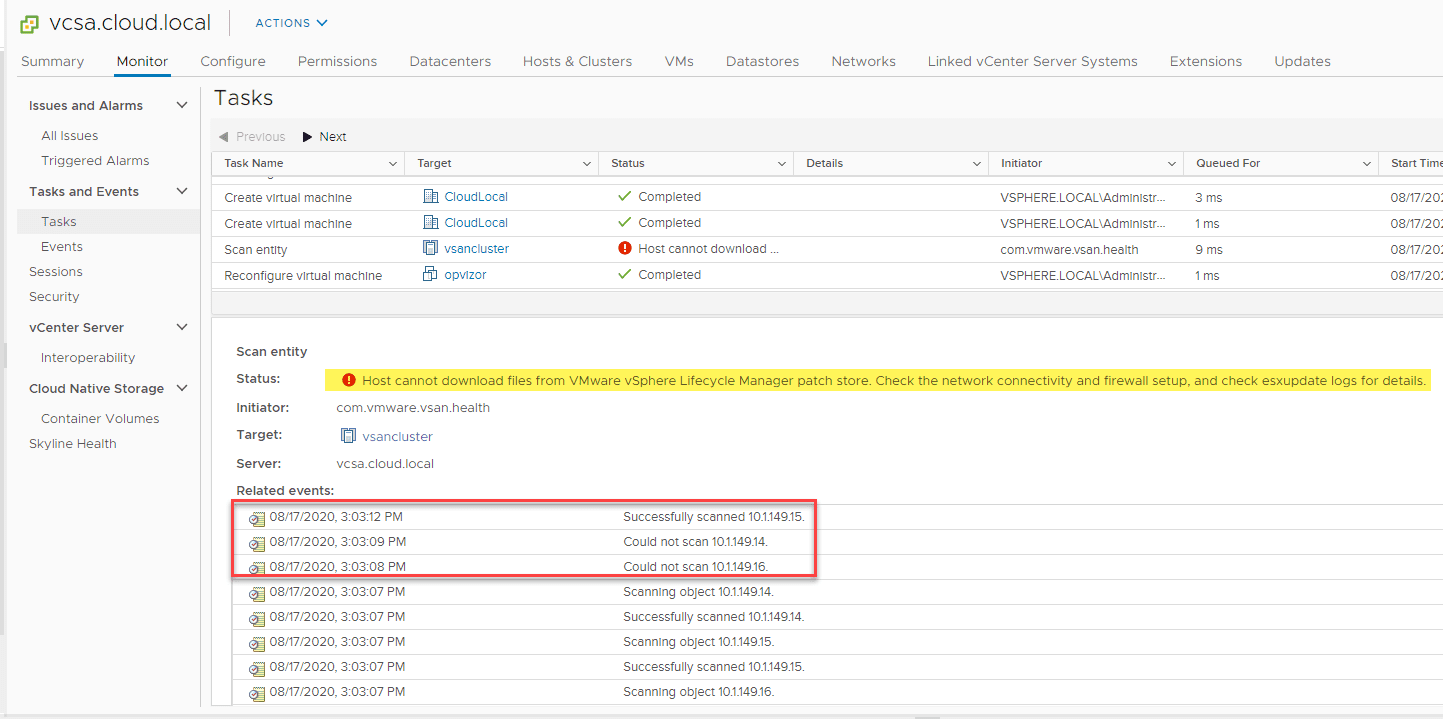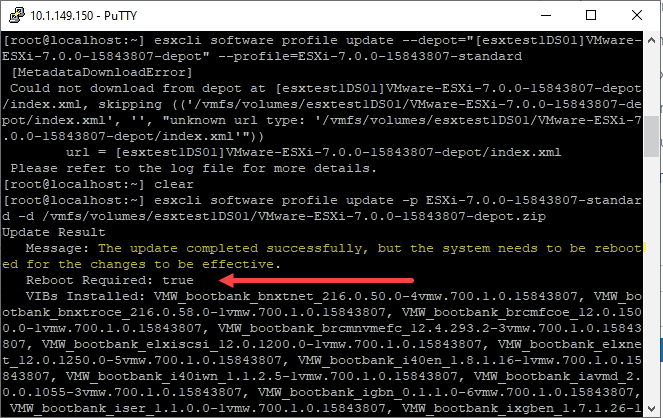Upgrade vCenter Server VCSA 6.7 to VCSA 7
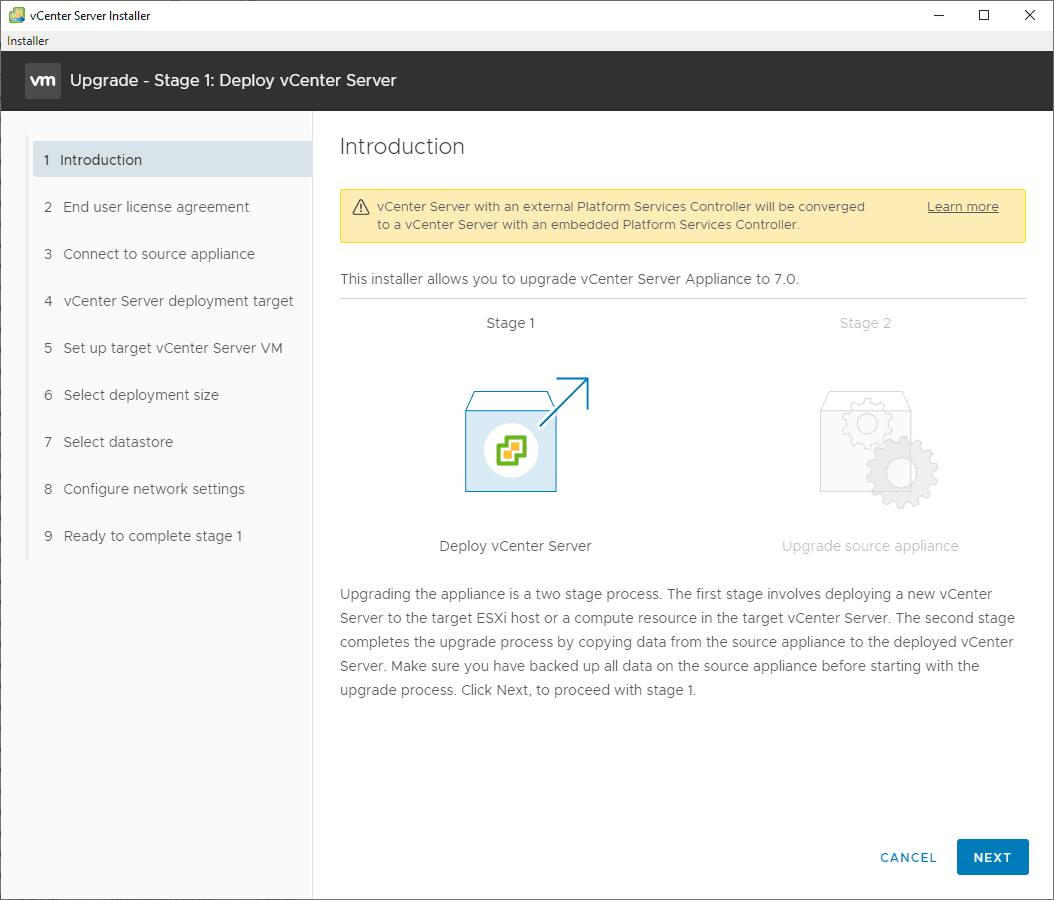
No doubt many of you are excited to see the VMware vSphere 7 GA download available. Everyone is ready to get their “upgrade on” to get lab and test environments upgraded to start playing around with the software hands on. In this post, we will take a look at the first part of most standard vSphere upgrades, upgrading the vCenter Server. Let’s take a closer look at how to upgrade vCenter Server VCSA 6.7 to VCSA 7.
vCenter Server VCSA 6.7 to VCSA 7 Upgrade Considerations
As excited as most are to start taking advantage of the new functionality offered in vSphere 7, there are several things that you want to consider first before taking the plunge and just blindly attempting upgrades across the board.
There are the normal things that you need to consider before upgrading a production environment with vSphere 7. You want to ensure that you have compatibility across the products that you are using that either integrate with or “talk” to vSphere to ensure these will continue to work after upgrading your vSphere infrastructure.
A great place to start with any upgrade of VMware products is the VMware Compatibility Guide. This provides a great interface to select a particular version of a product and display the other products and their compatibility with that particular version.
An additional consideration that always comes into play is your data protection solution. It seems there is always a race from the backup vendors to get a supported version of their software that works with the latest version of VMware vSphere.
This will certainly be the case with VMware vSphere 7. I have not seen any vendors as of yet at the time of this writing who are offering support for vSphere 7. This is always a deal breaker when thinking of upgrading production environments.
Upgrade vCenter Server VCSA 6.7 to VCSA 7
In most standard environments that only have vCenter Server and ESXi hosts, you upgrade your vCenter Server first. Once vCenter is upgraded, then you can run through the upgrade on your ESXi hosts.
The same is true with VMware vSphere 7. So the first thing you want to do is upgrade vCenter VCSA appliance. It is always a good idea to make sure you are running the latest build of VCSA. To do that, login to your VAMI interface Update > Check Updates. Make sure you install the patches and updates on your current 6.7 release. This helps to minimize issues with the upgrade.
Now that you have your vCenter 6.7 VCSA appliance updated to the latest version, Download and use the vCenter Server Installer for upgrading to VCSA 7.
You will note, the vCenter Server Installer looks identical for the most part to the previous vCenter Server Installers.
Upgrade Stage 1 – Deploy vCenter Server
Run the utility and choose Upgrade.
The introduction gives a good overview of the process to upgrade your VCSA 6.7 appliance. This is a two Stage process. In Stage 1, you are deploying a new VCSA 7 appliance. This appliance will be used to copy over your data and then will be cut over to after the data copy is complete.
Accept the EULA.
Connect to your source appliance. This is the appliance that you want to upgrade. Click the Connect to Source button.
Enter in the connection and authentication information for your source appliance and also the vCenter or ESXi server that manages the source appliance.
Click Yes on the certificate warning.
Configure your deployment target. This will be the vCenter Server or ESXi host that will manage the VCSA 7 appliance.
Accept the certificate warning on the deployment target.
Setup your target vCenter Server VM. Choose a name that will be used in the vSphere inventory for the new appliance as well as the root password.
Select the deployment size options. The installer makes this much easier by displaying the values for each selection that will be configured.
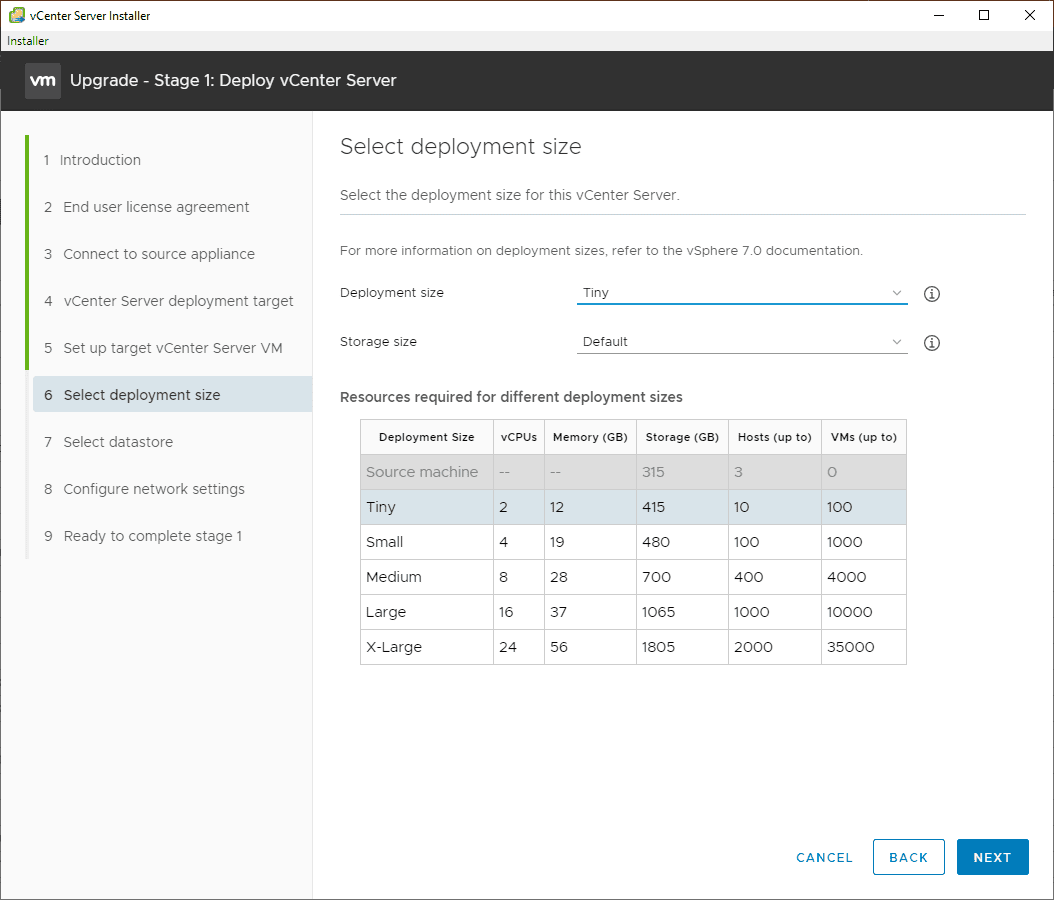
Select your target datastore and disk mode.
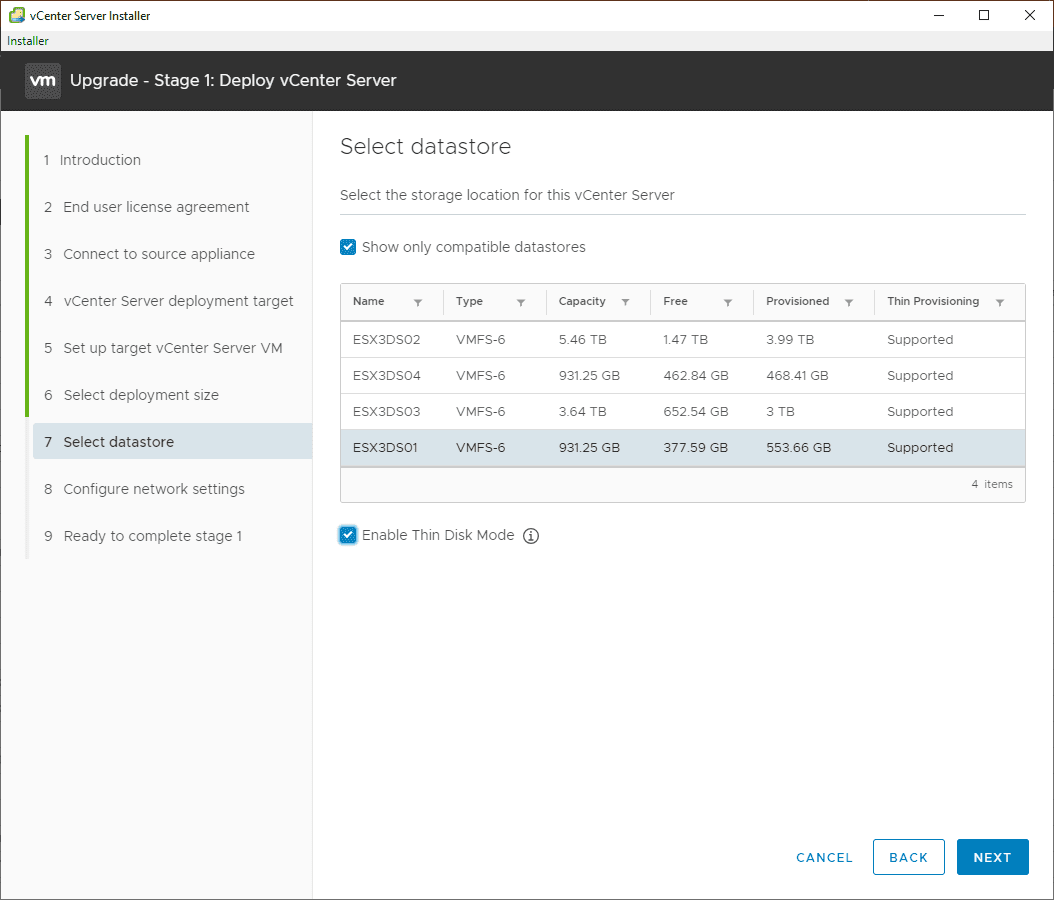
Select the vSwitch you want to use and the IP provisioning for the temporary network configuration of the deployed appliance. Keep in mind, the end result will be the new VCSA 7 appliance will assume the IP that is configured on the source appliance. So, this configuration at this stage will be temporary. In my case, I am just selecting DHCP for this.
Confirm your configuration choices here and then select Finish.
Deployment of the appliance begins.
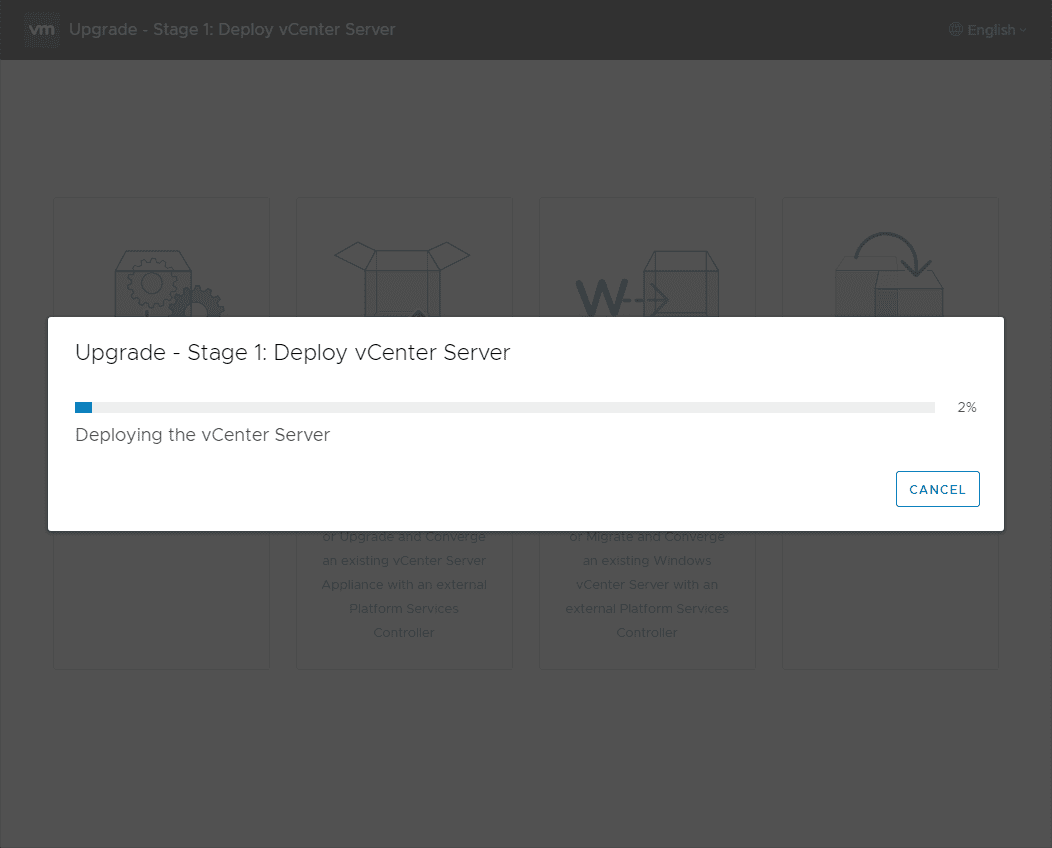
After bit, the new VCSA 7 appliance should be deployed and ready to continue to Stage 2.
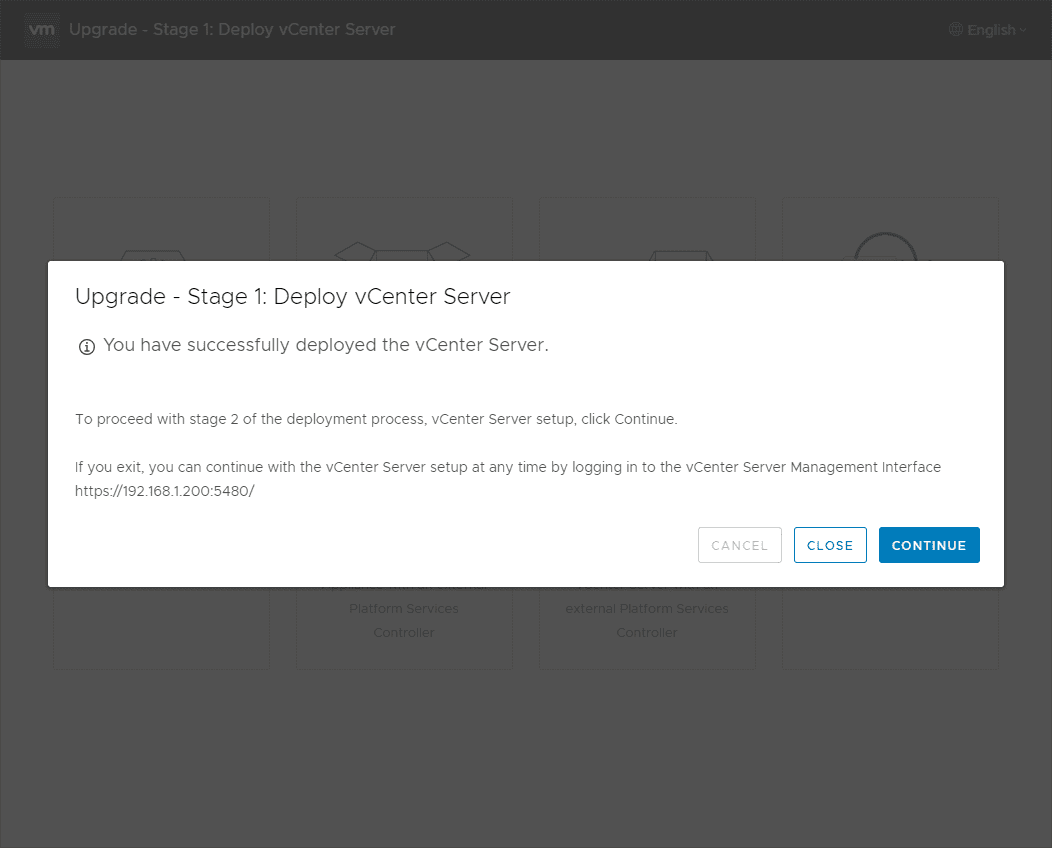
Upgrade Stage 2 – vCenter Server
Stage 2 of the upgrade process begins. The second stage completes the upgrade process by copying data from the source appliance to the deployed vCenter Server. You will want to back up your source appliance before starting with the upgrade process. At this point, I like to take a snapshot to easily roll back to in case something happens.
Connect to your source vCenter Server and environment that manages the source appliance. Click Next.
With Stage 2, it will run a Pre-upgrade check that will list out any potential issues.
Select the data you want to upgrade.
Make your choice for CEIP.
Finally, confirm your selections and check the box and make sure you have a backup of your source appliance. Click Finish.
You will see the warning that your source VCSA appliance will be shutdown as part of the process.
The process begins.
Finally, the process will complete. You will see a couple of informational notes regarding TLS as well as Auto Deploy.
Stage 2 is officially complete.
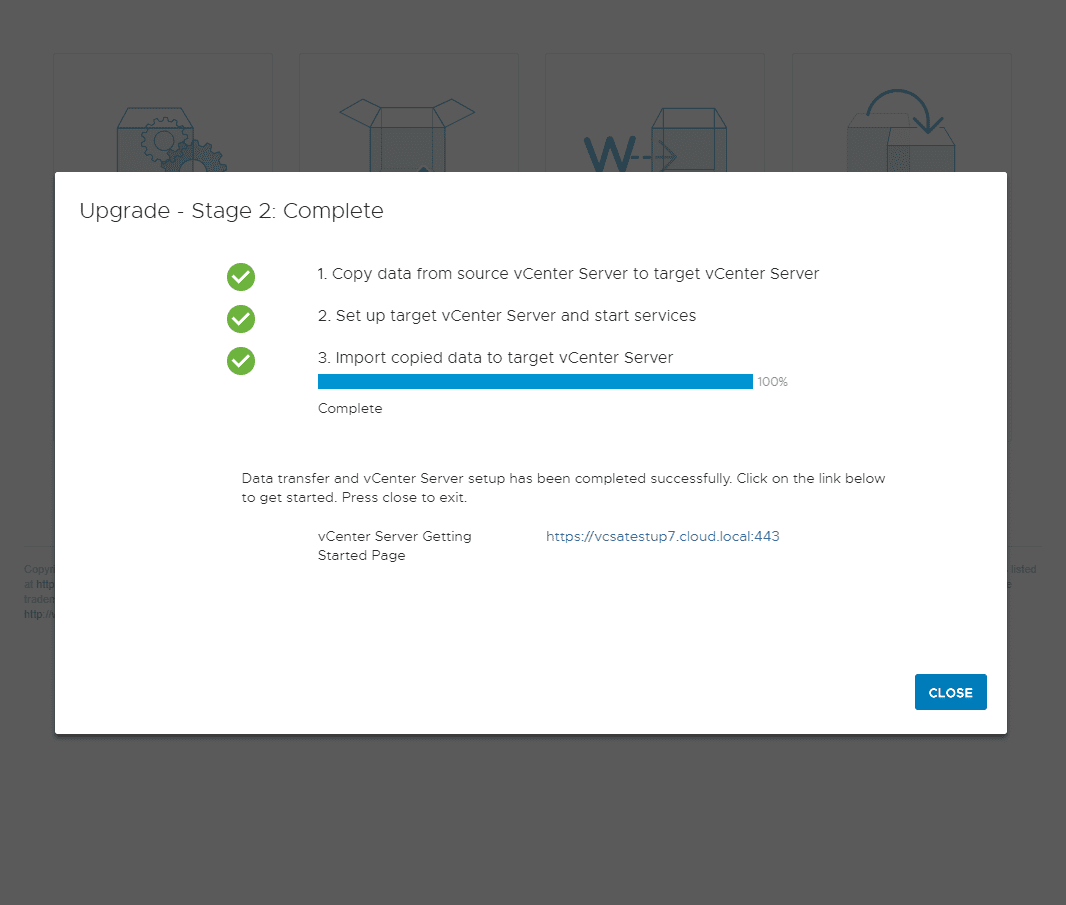
You should now be able to login to your newly upgraded VCSA 7 appliance!
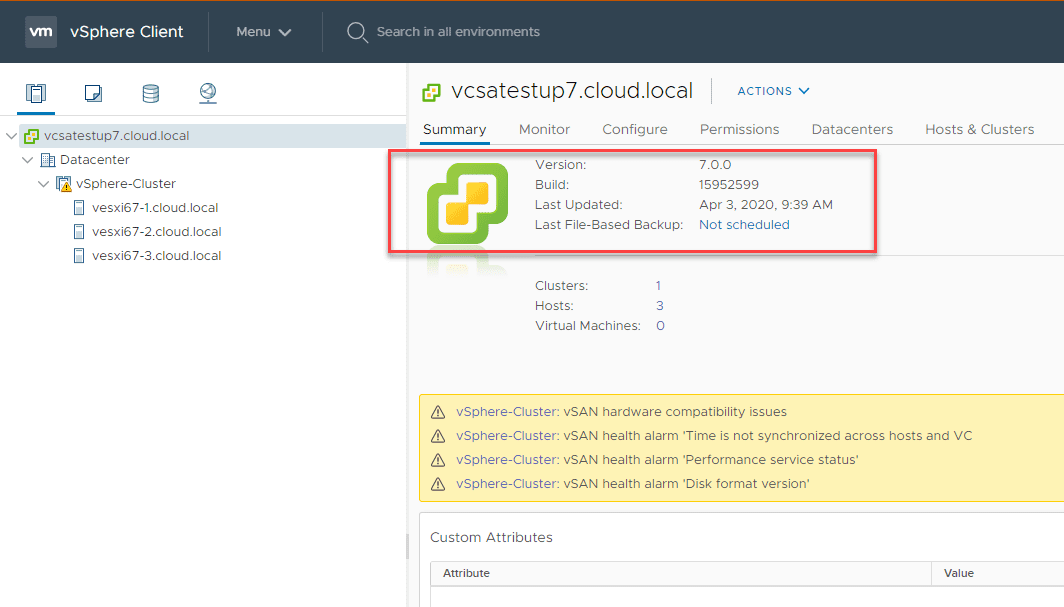
Wrapping Up
As major of an update as vSphere 7 is, it is great to see the process to upgrade is familiar and works as expected. I had no issues in the process to Upgrade vCenter Server VCSA 6.7 to VCSA 7 in my lab environment. Next up, we will look at upgrading our ESXi 6.7 hosts to ESXi 7.0. Stay tuned!


